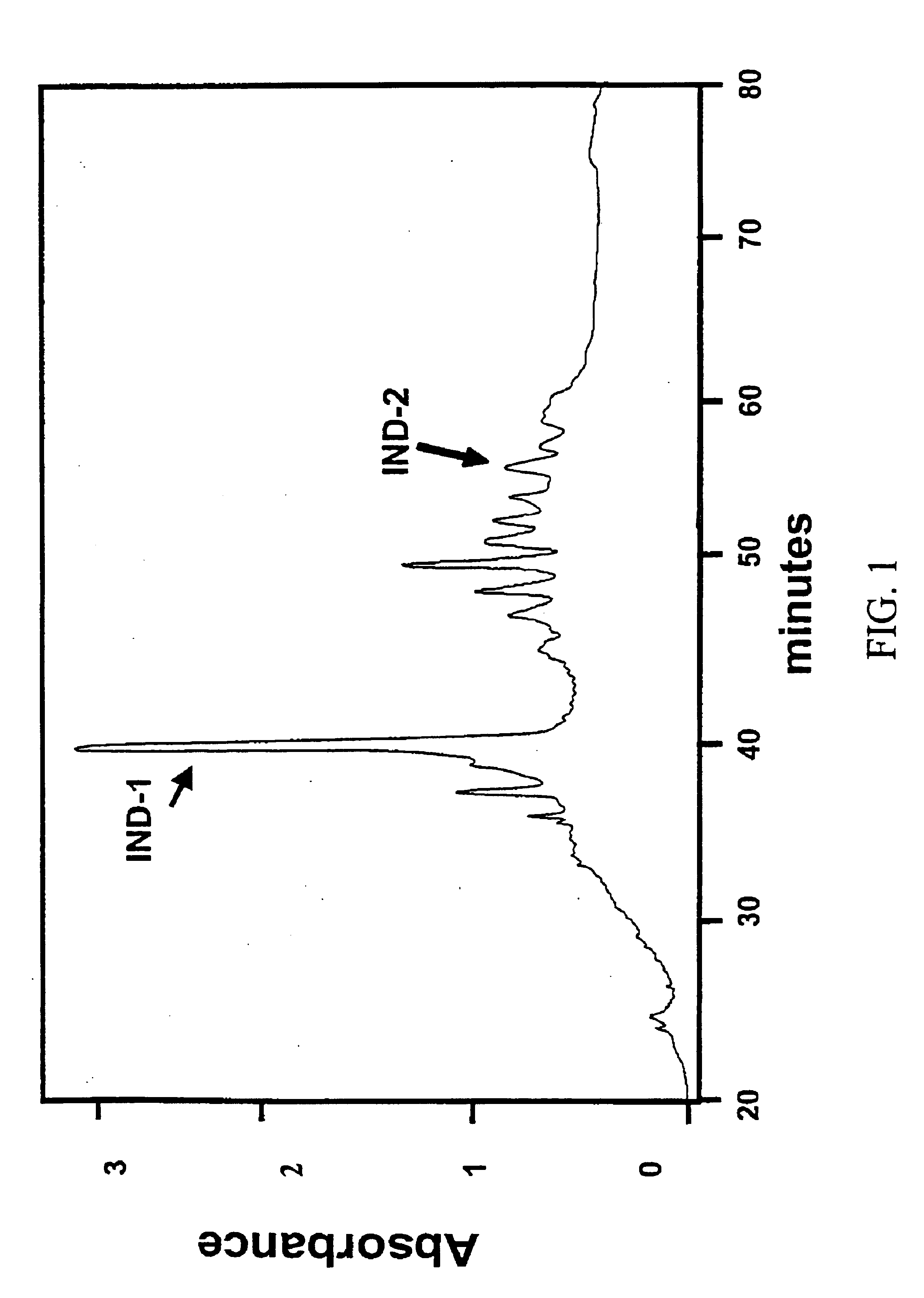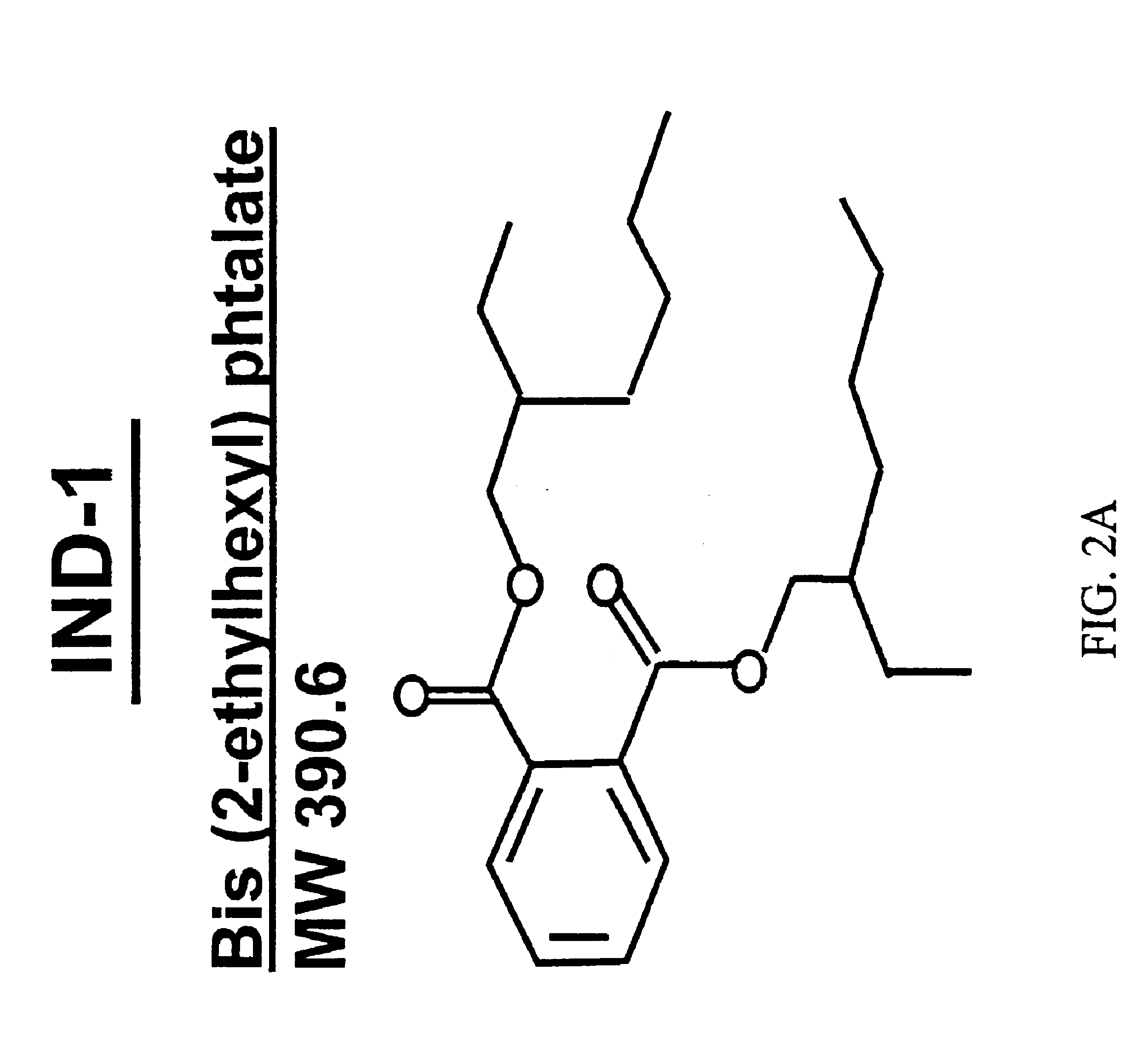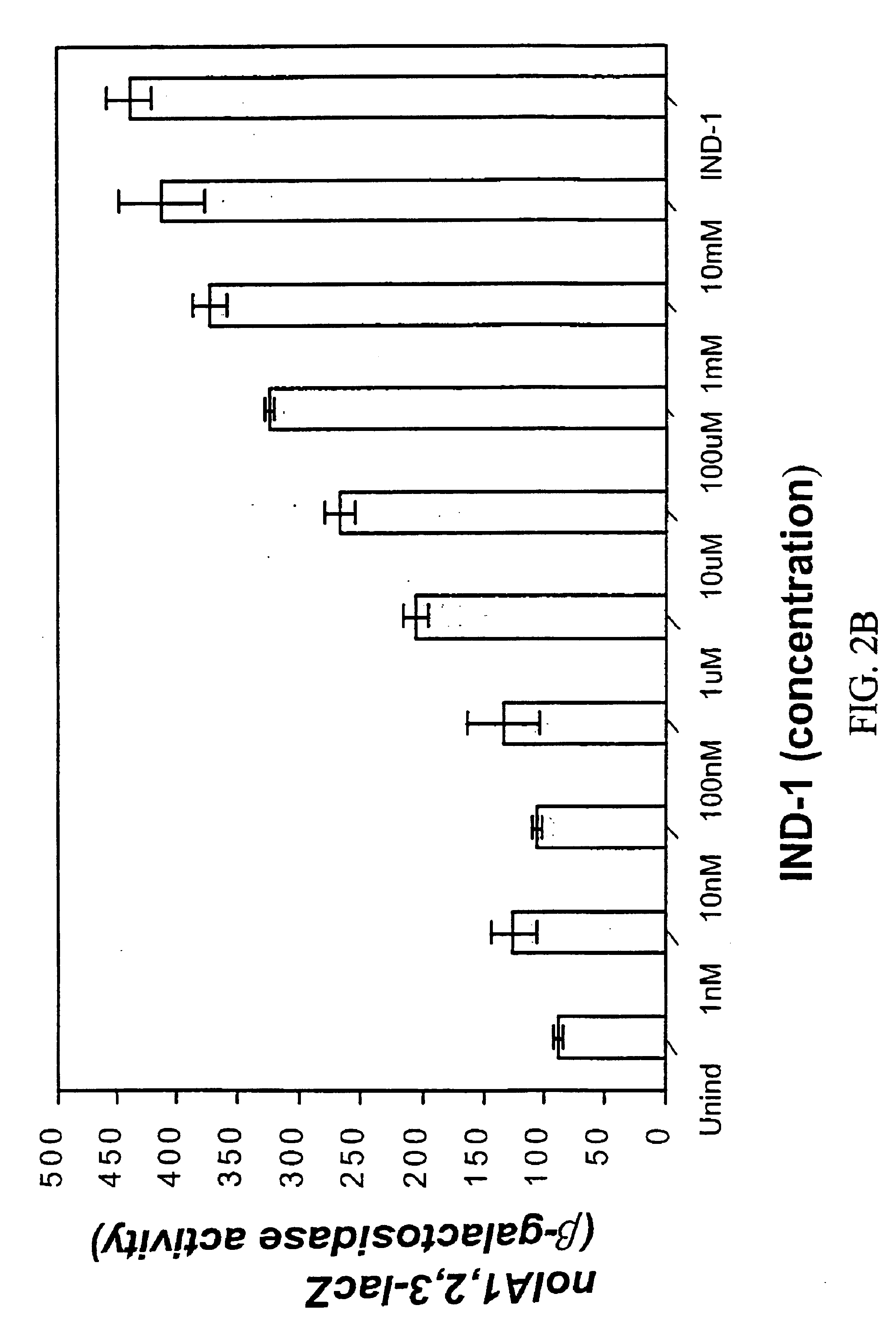Materials and methods for the enhancement of effective root nodulation in legumes
a legume and root nodulation technology, applied in the field of legume root nodulation enhancement materials and methods, can solve the problems of ineffective nodulation, inability to achieve alterations, and inability to see yield increase, so as to reduce the ability of b, reduce the efficiency of nodulation, and reduce the effect of nody-lacz induction
- Summary
- Abstract
- Description
- Claims
- Application Information
AI Technical Summary
Benefits of technology
Problems solved by technology
Method used
Image
Examples
example 1
Identification of NolA Inducers from Plant Extracts
[0074]While many of the nodulation genes of B. japonicum are induced by the plant flavonoids genistein and daidzein, these compounds and a variety of other flavonoids failed to induced nolA expression. NolA expression was, however, induced by plant extracts. Analysis of these extracts, using Reverse Phase HPLC, have identified the presence of two distinct compounds (IND-1 and IND-2) that are capable of inducing nolA (FIG. 1).
[0075]IND-1 has been identified as a phthalic acid bis-(2-ethyl-hexyl) ester (FIG. 2A). To confirm the activity of this compound, phthalic acid bis-(2-ethyl-hexyl) ester was chemically synthesized and shown to be able of inducing nolA expression (FIG. 2B). This compound is a strong inducer of NolA expression and inhibits nodulation.
[0076]Initial analysis of IND-2 indicates that its activity is sensitive to chitinase treatment. IND-2 may also be purified from soybean extracts, particularly commercially available ...
example 2
NolA Inducer from B. japonicum
[0077]Typically, B. japonicum cells are found in high population density in commercial inoculants. To determine if the bacterial nolA inducer was present in commercial inoculant, three soybean inoculants from two commercially available sources were extracted with butanol, and these extracts analyzed for their ability to induce the nolA-lacZ fusions. As shown in Table 1, nolA expression was induced significantly by the B. japonicum inoculant extracts. In contrast, very little induction was observed with samples where no B. japonicum were present (i.e., peat alone).
example 3
Quorum Control Mechanism for NolA Induction
[0078]NolA expression is population density dependent; its expression is low at a low population density, and significantly higher in more dense cultures (FIG. 5). This quorum control of nolA expression appears to be regulated by a compound that is secreted and accumulates in the culture medium. Addition of this compound (i.e. conditioned medium) to B. japonicum cultures grown to a low population density greatly increases the expression of nolA (Table 2). Consistent with the fact that nolA regulates nodD2, the levels of nodD2 expression not only showed a similar population density dependence (FIG. 6, Table 2), but were also found to be affected by the addition of the nolA inducer.
[0079]As shown in Tables 2-3 and FIG. 11C, an inducer of nolA-lacZ and nodD2-lacZ expression was detected in conditioned medium from B. japonicum cultures grown to a high population density. This inducer was capable of inducing transcription of both fusions when ad...
PUM
 Login to View More
Login to View More Abstract
Description
Claims
Application Information
 Login to View More
Login to View More - R&D
- Intellectual Property
- Life Sciences
- Materials
- Tech Scout
- Unparalleled Data Quality
- Higher Quality Content
- 60% Fewer Hallucinations
Browse by: Latest US Patents, China's latest patents, Technical Efficacy Thesaurus, Application Domain, Technology Topic, Popular Technical Reports.
© 2025 PatSnap. All rights reserved.Legal|Privacy policy|Modern Slavery Act Transparency Statement|Sitemap|About US| Contact US: help@patsnap.com



